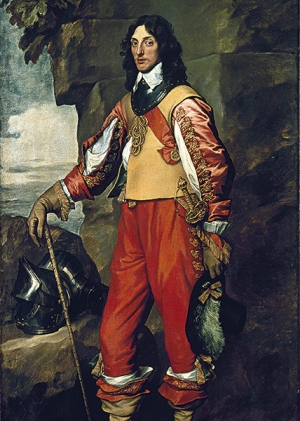|
Displaying items by tag: palladian
Houghton Hall, a Palladian manor built by Sir Robert Walpole in Norfolk in the 1720s, is ablaze. An unseen light source has turned the white stone staircase on the western façade an acid green, the portico glows white and the domes that cap the northern and southern towers are blushing magenta.
On one, a weathervane, picked out by some invisible beam, shines bright as a new penny against the darkening sky.
David Chipperfield has today unveiled his plans to reconfigure and renovate the Royal Academy of Arts in London, which will include building a bridge between two historic buildings.
Described by the London-based architect as "a series of subtle interventions", the development will include connecting Burlington House, the grand Palladian house used by the Royal Academy since the mid-19th century, and 6 Burlington Gardens, a former University of London building purchased by the art institution in 2001.
Abbot Hall was built in the Palladian style just three years after Canaletto left England for the last time. In 1746, by then in his late 40s, he first arrived for a prolonged stay in London. He was to remain for most of the following 10 years.
Already a well established artist, his work had proved very popular with aristocratic Englishmen doing their Grand Tour of Europe. In the 1720s, having started his career as a theatrical scene painter, Canaletto started painting his distinctive views of Venice, frequently featuring the many major churches designed for it by Palladio.
Houghton Hall, a lavish English country house built by Great Britain’s first Prime Minister, Sir Robert Walpole, announced that the American artist James Turrell will create a site-specific installation for the institution in June 2015. The Palladian estate, which is now home to David Cholmondeley, 7th Marquess of Cholmondeley, and his wife, Rose, boasts a sculpture park, spectacular interiors, exquisite furniture, rarely exhibited paintings by artists such as Thomas Gainsborough, Artemisia Gentileschi, and John Singer Sargent, and celebrated collections of silver, marble, and Sèvres porcelain.
In recent years, Lord Cholmondeley has commissioned a number of contemporary outdoor sculptures for Houghton Hall, including works by Turrell, Richard Long, Stephen Cox, Zhan Wang, Amy Gallaccio, and Jeppe Hein.

Museum of Fine Arts, Houston, Director Gary Tinterow announced an unprecedented exhibition: Houghton Hall: Portrait of an English Country House, which will be on view at the Museum from June 22 to September 21, 2014. The exhibition marks the first time the renowned collection of the marquesses of Cholmondeley, housed at Houghton Hall, the family estate in Norfolk, will travel outside of England.
The house and much of its collection were built in the early 1700s by Sir Robert Walpole—England's first prime minister and the ancestor of the current marquess. Renowned as one of the finest Palladian houses and one of the most extensive art collections in Britain, Houghton became notorious when Sir Robert's collection of Old Master paintings was sold by his grandson to Catherine the Great, in 1779. But the house and all of its furnishings, considered to comprise William Kent's Georgian masterpiece, remained intact; Walpole's descendants added considerably to the collection of paintings. From great family portraits by William Hogarth, Joshua Reynolds and John Singer Sargent, to exquisite examples of Sèvres porcelain, rare pieces of R. J. & S. Garrard silver and unique furniture by William Kent, the exhibition vividly evokes the fascinating story of art, history and politics through the collections of this aristocratic English family over three centuries.

A selection of oil paintings from Russia’s Hermitage Museum will be on view at Houghton Hall in England from May 17, 2013 through September 29, 2013. Great Britain’s first prime minister, Sir Robert Walpole, assembled the collection during the first half of the 18th century and built Houghton Hall to house the works. Paintings from Russian and American collections will complement the works, which are returning to England for the first time in 230 years.
Walpole built Houghton Hall, which now belongs to Lord Cholmondeley, one of his direct descendants, between 1722 and 1735. In 1779,When Walpole’s grandson was in need of money, he sold the majority of his grandfather’s collection to Catherine the Great for nearly $61,500. Approximately 75 of the sold works are returning to Houghton Hall for the exhibition including paintings by Rembrandt (1606-1669), Anthony van Dyck (1599-1641), Nicolas Poussin (1594-1665), and Diego Velázquez (1599-1660).
While a handful of the paintings have been on view in England since their sale in the 18th century, none of them have returned to Houghton Hall. Designed by the foremost architects of Walpole’s time, James Gibbs and Colen Campbell, Houghton Hall’s lavish interior was decorated by the eminent architect and furniture designer William Kent. Walpole spared no expense and Houghton Hall remains as one of the finest examples of Palladian architecture in England.
|
|
|
|
|